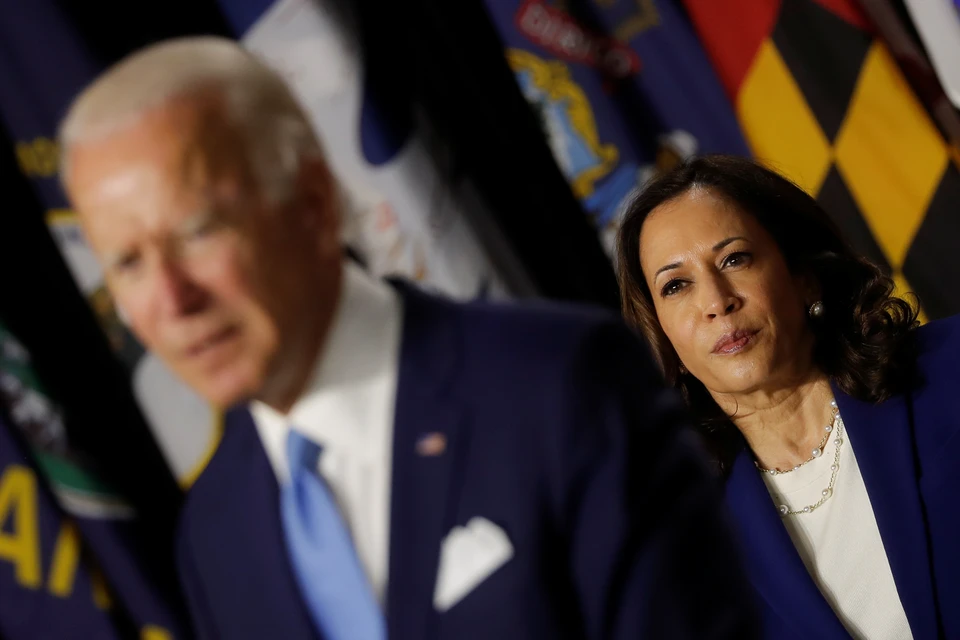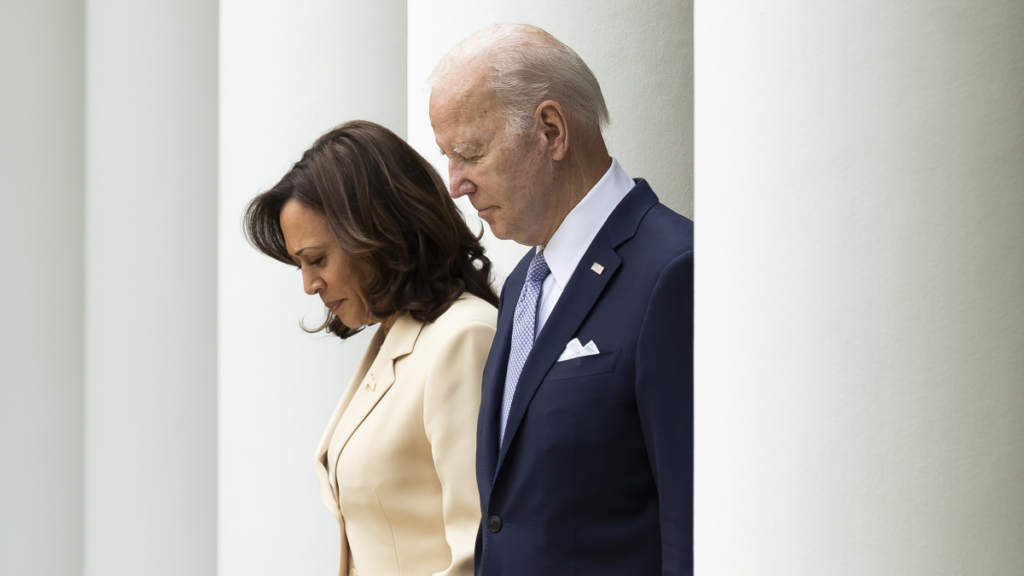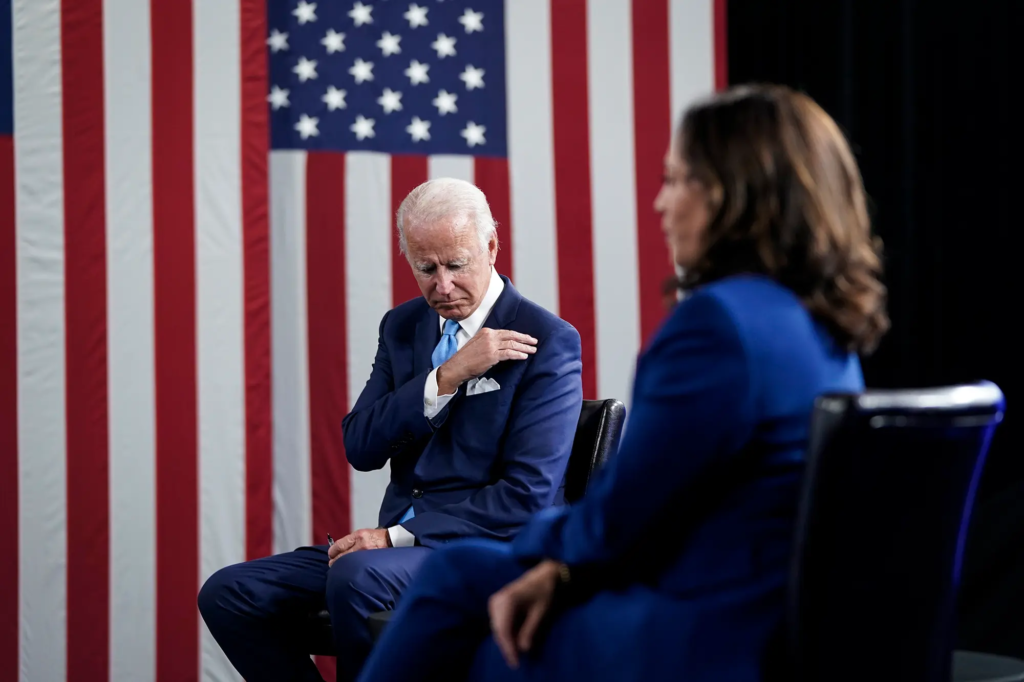In a historic turn of events, President Joe Biden has officially stepped down from the 2024 presidential race, marking one of the latest exits by a sitting president in modern U.S. history. With just over 100 days until the election, Biden’s departure has reshaped the political landscape, leaving the Democratic Party in a scramble to reorient its strategy against a formidable Trump campaign. This exit, influenced by intense internal and public pressure, reflects both Biden’s acknowledgment of his declining health and the party’s strategic need to preserve stability amid mounting challenges from the right. Biden’s withdrawal marks a departure from his long-standing role as a centrist figure within the Democratic Party, a position he has navigated since his days as a senator. Over the years, Biden adapted to his party’s ideological shifts, from supporting conservative policies in the 1990s to embracing more progressive stances under the influence of figures like Bernie Sanders and Elizabeth Warren.

However, with declining poll numbers and increasing doubts about his health, Biden ultimately yielded to the party’s call for change. This decision, while a relief for many, underscores the crisis in a Democratic Party struggling to maintain its credibility among an increasingly skeptical electorate.
Harris Steps Up: The Democratic Party’s Next Bet
Following Biden’s exit, Vice President Kamala Harris has emerged as the presumptive Democratic nominee, endorsed by Biden and key party figures like Nancy Pelosi, Chuck Schumer, and Jaime Harrison. Harris’s sudden elevation is seen as a calculated choice aimed at maintaining continuity while presenting a fresh face in the race against Trump.

Despite her historic role as the first female vice president and her strong showing in early fundraising, Harris faces skepticism, even within her party. Democrats worry whether her record as a former prosecutor and her moderate political stance can rally the progressive base or sway undecided voters in swing states.
Harris’s selection also reveals divisions within the Democratic ranks. While the leadership presents a united front, behind the scenes, influential figures like Gavin Newsom and Gretchen Whitmer are already eyeing 2028, viewing the 2024 race as fraught with political risks. Nonetheless, with Harris at the forefront, the party is determined to portray itself as the stable alternative to Trump’s populist message, appealing to those disillusioned by Biden’s tenure but wary of Trump’s return.
The Struggle for Legitimacy: Concerns Over Party Unity and Reform
Biden’s withdrawal highlights a deeper issue within the Democratic Party: the internal struggle between corporate-aligned centrists and a progressive base pushing for transformative change. The Democratic leadership’s support for Harris, viewed by some as a symbolic gesture, risks alienating younger voters and the working class who are increasingly critical of corporate influence within the party. The reluctance to embrace figures like Sanders or Warren has left a gap that populists like Trump have successfully exploited, framing the GOP as the party of the “common man” while Democrats are often perceived as defenders of the elite.
Progressives within the party argue that Biden’s exit is a unique opportunity to redefine Democratic policies and build on the economic populism and labor reforms introduced during his presidency. With Biden’s achievements, such as the American Rescue Plan and support for the FTC’s antitrust efforts, there is a foundation for the party to build a more progressive platform. However, these advances are at risk of being overshadowed by the party’s historical allegiance to corporate donors and cautious centrism.
The Republican Response: Trump’s Play for Populism
For Trump and his allies, Biden’s departure presents both an opportunity and a challenge. The former president’s campaign had been built around opposing Biden, portraying him as a symbol of a failing establishment. Now, with Harris as the Democratic frontrunner, the GOP must adjust its strategy. Trump has continued to position himself as the candidate of the working class, a message that resonates with many disillusioned by both major parties. Figures like J.D. Vance and Ron DeSantis echo Trump’s populist rhetoric, framing the GOP as the only choice for those frustrated with the status quo.
The GOP’s strategy, however, rests on a complex balancing act. While Trump draws support from conservative and rural voters, his policies have also appealed to segments of minority communities and young people who feel abandoned by the Democrats’ moderate stance. The GOP’s narrative capitalizes on economic frustrations, promising a return to American manufacturing and tougher immigration policies, messages that have resonated in an economy marked by rising inequality and job insecurity.

Populism and the Crisis of Reform
The current political environment underscores a broader crisis within American reformism. Figures like Bernie Sanders and AOC, once seen as revolutionary forces, have struggled to implement significant change within the Democratic Party. Progressive leaders, while popular among certain demographics, face systemic barriers in a party still influenced by corporate donors and centrist pragmatism. This has left many on the left disillusioned, as Democrats have often failed to deliver on promises of structural reform, allowing Trump’s brand of populism to fill the void.
Despite the progressive movement’s early successes, figures like Sanders and members of the Squad have often aligned with establishment decisions, diluting their impact.
The Democratic Socialists of America (DSA) and its allies have attempted to advocate for working-class interests, but internal divisions and reluctance to break from the Democratic Party have limited their influence. For many, this represents a crisis of reformism, as the promise of change through Democratic channels appears increasingly unattainable.
Looking Ahead: A Crossroads for American Democracy
As the country heads toward a highly polarized election, the stakes for both parties are immense. For Democrats, Biden’s withdrawal signals a potential pivot toward a more unified platform, albeit one still struggling to balance progressive ideals with centrist strategies. Harris’s leadership will be tested as she seeks to unify a fractured base while appealing to a skeptical electorate.
For Republicans, the race presents an opportunity to capitalize on public discontent and position themselves as champions of the working class. Trump’s populist appeal remains strong, particularly among those frustrated with Democratic reforms that they perceive as insufficient or disconnected from everyday struggles.
This election cycle represents a critical juncture for American politics, as both parties vie for a nation increasingly divided by class, ideology, and economic hardship. Whether through Harris’s appeal to stability or Trump’s populist message, the choice before Americans in November reflects deeper questions about the future of democracy and the possibility of real change in a system under strain.

